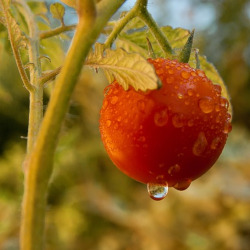Filmmaker Damon Gameau wants us to imagine what the world could look like in 2040 if we focused on solutions—solutions that improve health, income inequality, security and communities with the bonus of drastically reducing emissions and regenerating ecosystems.
Gameau is no Pollyanna, he writes in a recent op-ed in the Guardian. He gets just how much trouble our planet is in.
But rather than be paralyzed by the relentless barrage of bad news, Gameau suggests that after we acknowledge how dire the situation is, we move on to focus on the solutions—solutions that already exist.
That’s the theme of the film he’s been working on for the past three years, called “2040.” Gameau describes the film as:
. . . a visual letter to my daughter showing her what the world could look like that year if we put into practice some of the best solutions that exist today.
Those solutions, Gameau says, “include regenerative agriculture practices which takes carbon from the atmosphere and returns it to the soil with the cascading benefits of water retention and nutrient-dense food.”
In our newsletter this week, you’ll find the usual dose of bad news—burgers made with GMO soy, grown with a known carcinogen . . . the failure to ban a poison known to cause brain damage in children.
But you’ll also read about solutions, about the growing momentum behind the movement to regenerate everything from our soils and water, to our health, the economic and social revitalization of our communities and to the restabilization of our climate.
Regenerative agriculture solution isn’t the only solution to all of our problems. But it’s an essential piece of the solution puzzle. And it’s here. Now.
We’ve got this. All we have to do is scale it up. And with your help, we will.
Make a tax-deductible donation to the Organic Consumers Association
Support Citizens Regeneration Lobby, OCA’s 501(c)(4) lobbying arm (not tax-deductible)
Click here for more ways to support our work















